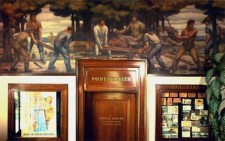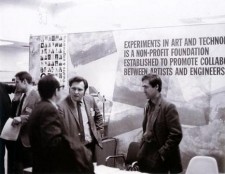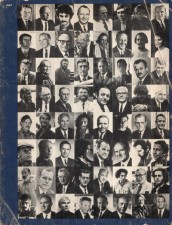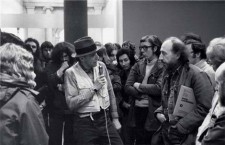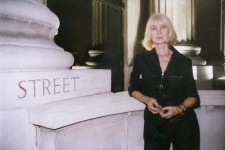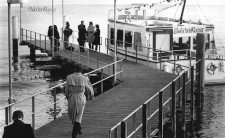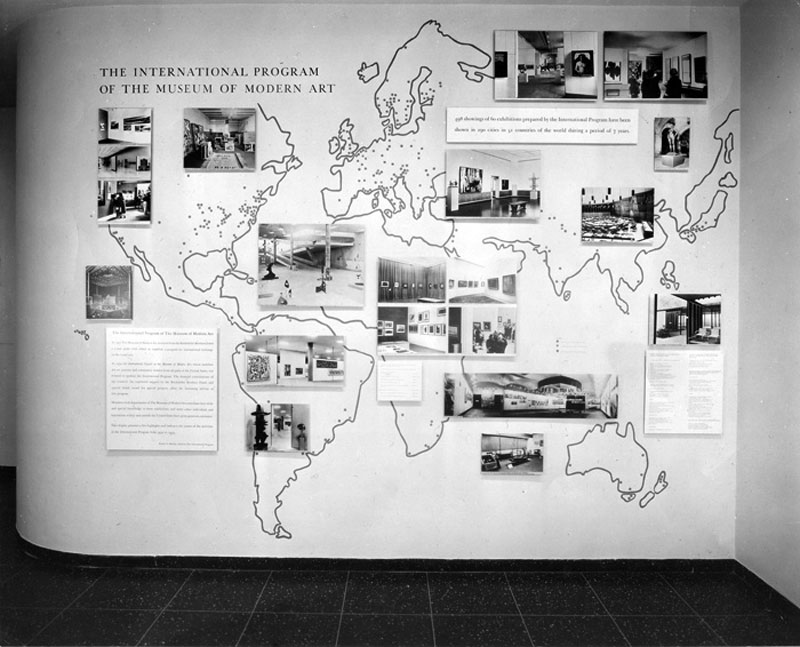
Government and the Arts
United States
In the United States it could be said that government support for the arts began in 1790 when the First Congress implemented the copyright provision of the U.S. Constitution. This allowed those that create to retain the financial interest in their intellectual property. The Founding Fathers realized that encouraging creativity was good for the country. However, some might say that encouraging creativity through the “free market” system of capitalism is restrictive in many ways. Nonetheless, this was the beginning of America’s encouragement of ingenuity and vision with the nations benefit in mind.
Another indirect capitalistic manner in which the U.S. government started supporting artistic work was through the system of tax deductions. This started in 1917 when Congress passed the first bill that allowed tax deductions for charitable contributions to non-profit institutions. This is considered the first indirect government subsidy of the arts through the tax code. The code has changed over the years but it continues to encourage revenue from individual and corporate donors and foundations through tax incentives.
The U.S. Government’s first direct support to artists occurred during the Great Depression through Roosevelt’s New Deal. The development of the New Deal’s support for the arts was sparked when George Biddle, who studied in Mexico with Diego Rivera, and planted the idea of publicly supported mural painting in FDR’s head. The Public Works of Art Project, created to alleviate unemployment during the harsh winter of 1933-34, was the first New Deal initiative for the arts. This project commissioned murals for post offices, libraries, schools and other public buildings. This activity lead directly to the Work Projects Administration (WPA), which was created in 1935 with major divisions covering visual art, music, theater and writing.
The New Deal’s aid to artists was primarily concerned with providing work to the unemployed and not altogether motivated by a special interest in promoting the arts. However, the output from this program developed into a significant contribution to American Art. Artists like Jackson Pollock, Ivan Albright, Moses Soyer, Philip Guston, Arshile Gorky, Mark Rothko and many others worked for the WPA. Once this talent had been harnessed for public purposes, visionary leaders such as Hallie Flanagan, head of the Federal Theatre Project (FTP), realized the possibilities for enacting social change through these programs. FTP’s productions treated such controversial and urgent topics as poverty and exploitation (One-Third of A Nation) and the spread of syphilis (Spirochete) before the House Committee to Investigate Un-American Activities closed them in 1939.
The WPA program only lasted for 10 years but community artists continue to be inspired by the New Deal even today. It established the importance of oral history as a basis for cultural preservation; for instance, most surviving slave narratives were collected through the WPA. The WPA was the United States first initiative that anticipated a supported and sustained role for artists in community service. As Stuart Davis said at the time, “The artists of America do not look upon the art projects as a temporary stopgap measure, but see in them the beginning of a new and better day for art in this country.”
Following WWII another sort of government support for the arts developed in the form of Cold War cultural diplomacy. Much has been written about the controversial programs developed and funded first by the Office of International Information and Cultural Affairs and subsequently by the CIA, which aimed to convince the world of the benefits of art and life under capitalism. Abstract Expressionism, Weapon of the Cold War by Eva Cockcroft (PDF)
Projects included the ill-fated exhibitions “Advancing American Painting” and “100 American Painters”, both of which were censored and ultimately canceled due to the objections of right wing congressmen who denounced abstract art and its “brainwashed artists in the uniform of the Red Brigade” as well as the American National Exhibition in Moscow, which sparked the infamous Kitchen Debate. Unlike the WPA, however, such support did not put money directly into the pockets of artists.
It wasn’t until another period of high unemployment in the early-mid 1970s that the government began to sponsor another program that echoed the WPA. In 1973, the Nixon administration started the Comprehensive Employment and Training Act (CETA) and by CETA’s height in 1979, the Department of Labor estimated that $200 million had been invested in arts jobs in that year alone. By June of 1977, many CETA-funded artists were employed not just by city agencies and institutions, but also through private nonprofit organizations. Many community based artists working in mid-1970s either held a CETA job or worked directly with someone who did. However, CETA was ended almost overnight when Ronald Reagan took office in 1981.
Support for artists has also occurred at different levels through various government agencies. For example, in 1962, shortly after NASA’s establishment, the NASA Art Program was created on the principle that artists are uniquely equipped to interpret and document the experience of space exploration. Artists were commissioned, including Norman Rockwell and Robert Rauschenberg, to examine the sensation of space exploration. NASA used artists working in diverse mediums and genres to enlighten varying audiences with a special concern for those that might not normally be interested in what NASA is doing. In 2004 NASA made a courageous move by welcoming their first Artist-in-Residence, Laurie Anderson. Anderson’s electronic work, both investigational and illusory, seemed a good match for NASA. Anderson was allowed to explore in various NASA field centers and then respond freely to her observations and impressions. In 2005 she opened her one-women show “The End of the Moon” based on her time at NASA. When Congress cut NASA’s budget the artists-in-residence program, which was already under attach, was immediately terminated. Nonetheless, as a result of NASA’s Art Programs their collection includes 2,500 works by more than 350 artists.
The history of U.S. national parks has often been connected with the history of great American artists. For example, painter Thomas Moran through his work directly influenced the establishment of the first National Park at Yellowstone in 1872. While many artists were advocates for the U.S. National Park Service, funding for artists in residence has only become popular in the last decade. The National Park Service had a long history of artists working in the Parks and finally realized that art can contribute to the conversation about preservation, environmental issues and park and art advocacy. There are currently 29 parks participating in the United States with Artist-In-Residence Programs.
In 1965, Congress founded the National Endowment for the Arts (NEA), and since then it has been the leading source of U.S. Government support for the arts. The NEA was established to cultivate American creativity, to promote American culture, and to sustain and preserve artistic traditions. In January 2011, 165 conservative members of Congress representing the Republican Study Committee called for the termination of the NEA as a measure to reduce the government deficit. The NEA was not disbanded but the budget was reduced from the 2010 earmark by $6 million, to $161.3 million. To understand the position of art funding in the U.S. it should be pointed out that NEA’s annual budget is equivalent to the cost of only six inches of a B-1 bomber.
Differences in Funding Systems
Outside the Untied States, particularly in Europe, public funding for the arts is greater and, in many cases, administered on the state and municipal levels. This is in part because American and European systems fund the arts in ways that are in sync with their principal economic systems. The U.S. system is based on minimizing government spending and maximizing deregulated, privatized capitalism. Corporate freedom is considered important, almost as an extension of personal freedom. Europeans on the other hand believe in more mixed economies with larger social and cultural programs where governmental spending often equals half of the GNP.
In the United States the arts maintain a relatively marginalized existence of government support and must rely on gifts from corporations, foundations and the wealthy. Advocates of the American system argue that privatization and the marketplace provides greater efficiency than direct government funding. Europeans argue that the capitalistic system creates an isolated, corporate dominated society with reduced individual and social options for artists. In Europe, lively and varied artistic expression is considered important to people and because of that, funding for the arts is a platform of every major political party. Politicians actually search for opportunities to speak about the arts because it often gives them a political advantage. In the US politicians often shy away from this because it is easily attacked as a waste of tax payer dollars. (In the UK, which has generally been part of the European tradition of supporting the arts, recently announced budget cuts that will bring them much closer to the American system.)
Collaborations with Industry
Experiments in Art and Technology
Bell Laboratories scientist Billy Klüver joined with Robert Rauschenberg in 1967 to create Experiments in Art and Technology (EAT). EAT facilitated collaboration by arranging one-to-one contact between artists and engineers. Rather than defining a formal process for cooperation they simply put the representatives together and let the course of action develop spontaneously. EAT’s mission was to expand the role of the artist in society and eliminate the separation of the individual from technological change. EAT participated in he Pepsi Pavilion at Expo ’70 at Osaka where artists and engineers collaborated to design and program an immersive installation that included a fog sculpture by Fujiko Nakaya. Twenty-eight regional EAT chapters were established throughout the US to promote collaborations between artists and engineers and expand the artist’s role in technological development. In 1966, 10 New York artists working with 30 engineers and scientists from Bell Laboratories created groundbreaking performances that incorporated new forms of technologies such as video projection, wireless sound transmission, and Doppler sonar. (9 evenings at MOMA)
Art and Technology Program
In 1967, Los Angles Country Museum of Art (LACMA) began recruiting Californian companies in the high-tech industries to partner with artists in the formation of the museum’s Art & Technology Program. These collaborations and proposals resulted in a creative process, which sometimes ended with a specific project and sometimes did not. The development of tangible art objects was not the main focus for this program but rather the creative process itself was the aspiration. At the end of this project a report was filed that documented the 76 artist proposals and resulting residencies at 40 sponsoring corporations that occurred as a result of the program. In the spirit of any scientific research, the report dealt objectively with the experiments that succeeded as well as the proposals that failed or did not result in residencies. The main idea of this project was to show that every aspect of an investigation is relevant, whether its outcome proves or disproves a theory and that all of the information learned serves the purpose of advancing knowledge.
LACMA’s Archives on the Art & Technology Program 1967 – 1971
Foundation for Research, Science and Technology
In 2002 New Zealand’s Ministry of Research spearheaded a fund that encourages and supports the convergence between the arts and science as a building block for innovation and creativity. This funding is part of the Government’s commitment to fostering collaborations as an important component of New Zealand’s innovation system. The Fund supports collaborative projects being undertaken by teams comprising New Zealand scientists and artists. Teams are expected to work together, share knowledge and use their respective arts and science expertise in order to explore and develop new ways of working, new ways of thinking and/or new ways of using existing knowledge.
Disonancias (Spain)
The DISONANCIAS programme, which has now been running for five years in Euskadi, consists of connecting artists with business and organisational area managers to work together on research projects and thus facilitate creative social environments. Creation as a driving force for applied research. Creation as a factor for development and innovation. The artist devoted to improving production based on his or her values. The artist is devoted to a dialogue with reality and rethinking, reinventing and communicating with companies. The Disonancias programme aims to offer contemporary artists the possibility of experimenting with advanced media while interacting with the materials, processes and technology of companies. The programme is open to creators working with any type of media or in any discipline, but they must in all cases accept that it is not about an autonomous project, but one subject to certain specific requirements from the company, with the main objective being investigating a previously agreed upon prototype, procedure or idea. The artist as a participative worker in the area of an added value in the production chain, the utopia of the avant-gardes put into practice.
Tiilt (Sweden)
TILLT has been regionally commissioned by the Cultural Affairs Committee of the Region of Västra Götaland to develop a venue where Culture and the Working Life may fruitfully converge. The region consists of 49 municipalities where approximately 1.5 million people live. TILLT has been operating within the region?since 1973.
Since the beginning of the 2000s TILLT has focused on transferring the Discourse of Art into forums outside the reach of traditional artistic domains. This work has been carried out under the trusteeship of a board constituted by representatives from the Regional Trade Union, the Confederation of Swedish Enterprises and representatives of the Cultural sector The Göteborg Opera, theatres, museums, etc.). The organisation is supported by the Regional Development Committee and the Cultural Affairs Committee of Västra Götaland and the Swedish National Council for Cultural Affairs.
The basic work of TILLT consists in supplying some 50,000 employees in nearly all business sectors with easy and affordable access to a broad array of cultural events and arts, serving as hub for the human resource development program of every workplace affiliated to TILLT.
TILLT – For a New Perspective
Art as Social Intervention
Social intervention draws upon the basic fundamental ideas used in traditional artistic creation. In traditional art, materials are manipulated with a vision in mind. The final intention may be formulated in the artist’s imagination and ideas often take a tangible form, visual image or audible sound. When art is social intervention, sociopolitical relationships and events become the material. No material, whether clay, paint or video data is infinitely malleable. All materials have some restrictions and artists often become experts at working within the capability of certain mediums. The artist must often transform the circumstances and reconsider solutions within the limits of the material. Artists become experts at designing change within restrictions of their materials and coming up with ideas to translate their vision. Designing, planning and implementing identifiable and practical transformation is what artists do both in traditional art and in social intervention.
Joseph Beuys and Social Sculpture
Although Beuys’ activities in social practice were mostly symbolic performances and lectures, his ideas about the potential for art to bring about revolutionary change had a tremendous influence on other artists and the discourse of art.
“Only on condition of a radical widening of definitions will it be possible for art and activities related to art [to] provide evidence that art is now the only evolutionary-revolutionary power. Only art is capable of dismantling the repressive effects of a senile social system that continues to totter along the deathline: to dismantle in order to build ‘A SOCIAL ORGANISM AS A WORK OF ART’… EVERY HUMAN BEING IS AN ARTIST who – from his state of freedom – the position of freedom that he experiences at first-hand – learns to determine the other positions of the TOTAL ART WORK OF THE FUTURE SOCIAL ORDER.”
Beuys statement dated 1973, first published in English in Caroline Tisdall: Art into Society, Society into Art (ICA, London, 1974), p.48. from Wikipedia, February 28, 2011
Artist Placement Group
The Artist Placement Group (APG) emerged in London in the 1960s, shifting the mission of the artist to a wider social context, including government and business. The APG’s mission was to place artists in non-art institutions, such as government departments and industry, where they could actively engage in the decision-making processes of the host. APG’s doctrine was that artists could have a positive effect on industry through both their inherent creativity and their relative ignorance of the host organizations practices. APG artists became involved in the day-to-day work of the organizations and were paid a salary commensurate with what other employees in that organization made.
APG’s first placement was with British Steel Corporation in 1969 and after that they placed artists with British European Airways, Hillie Co. Ltd, ICI Fibers, Milton Keynes Development Corporation, National Coal Board, Proteus Bygging, British Rail, Esso Petroleum and the Centre for the Study of Human Learning at Brunel University. These placements resulted in a variety of artists’ reports, interviews, films, photographs, installations and poetry. Like many other British artists and groups working outside common frameworks, the APG had a high profile abroad, particularly in Germany. APG served as a catalyst for other artist-in-residence programs and community schemes, both in Britain and abroad.
The name APG was changed in 1989 to Organization and Imagination (O&I). O&I describes itself as ‘an independent, international artist initiative, a network consultancy and research organization’. Its board of directors, members and specialist advisors include leading artists, civil servants, politicians, scientists, and academics from various disciplines.
WochenKlausur
WochenKlausur, a group of activist artists based in Vienna, has been guiding social interventions since 1993. They develop and implement programs for improving social concerns, operating on the fundamental belief that artists can develop creative solutions not just in the traditional ways but also in other areas of society. The group has discovered that artists are especially effective at devising schemes to solve problems that have not been resolved using conventional approaches.
WochenKlausur’s projects are conducted using an “artists in residency” platform. The translation of their name, “weeks of closure”, refers directly to the rigorous output that comes from the residency model which brings diverse groups of people together to develop solutions. While the solutions tend to be small scale, they are sustainable solutions that can grow and develop over time without the groups continued involvement. One of the group’s first projects provided medical care facilities for the homeless and as an extension of this project a mobile clinic was permanently established in the Vienna area. In Zurich, in collaboration with government officials and social service groups, they established a hotel and facilities for drug-addicted women, which continued to operate for six years. WochenKlausur established several small-scale initiatives to turn waste materials into new and usable objects. After one of these recycling projects in Chicago a new Entity was established called Material Exchange which continues the work and provides furniture to shelters and people in need.
After several successful initiatives, invitations from art institutions in Germany, Italy, Japan, Sweden, and the Netherlands followed. WochenKlausur now works on a framework were they are invited usually by an art institution to conduct an intervention. This provides the group with the space and funding they need to achieve the intervention. Most often they are not approached with any specific request but they find the need themselves through research of the local situation. While most projects are not straightforward and call for clever maneuvering WochenKlausur works toward concrete goals. When a project has been completed, it is possible to observe how many of its objectives have been achieved and the intention can be directly compared with the result. A total of twenty projects have been successfully conducted by WochenKlausur and more than fifty artists have been involved.
Links:
16beavergroup
Introduction to Greg Sholette’s Dark Matter
Superflex’s guarana cooperative
The Platypus Affiliated Society
